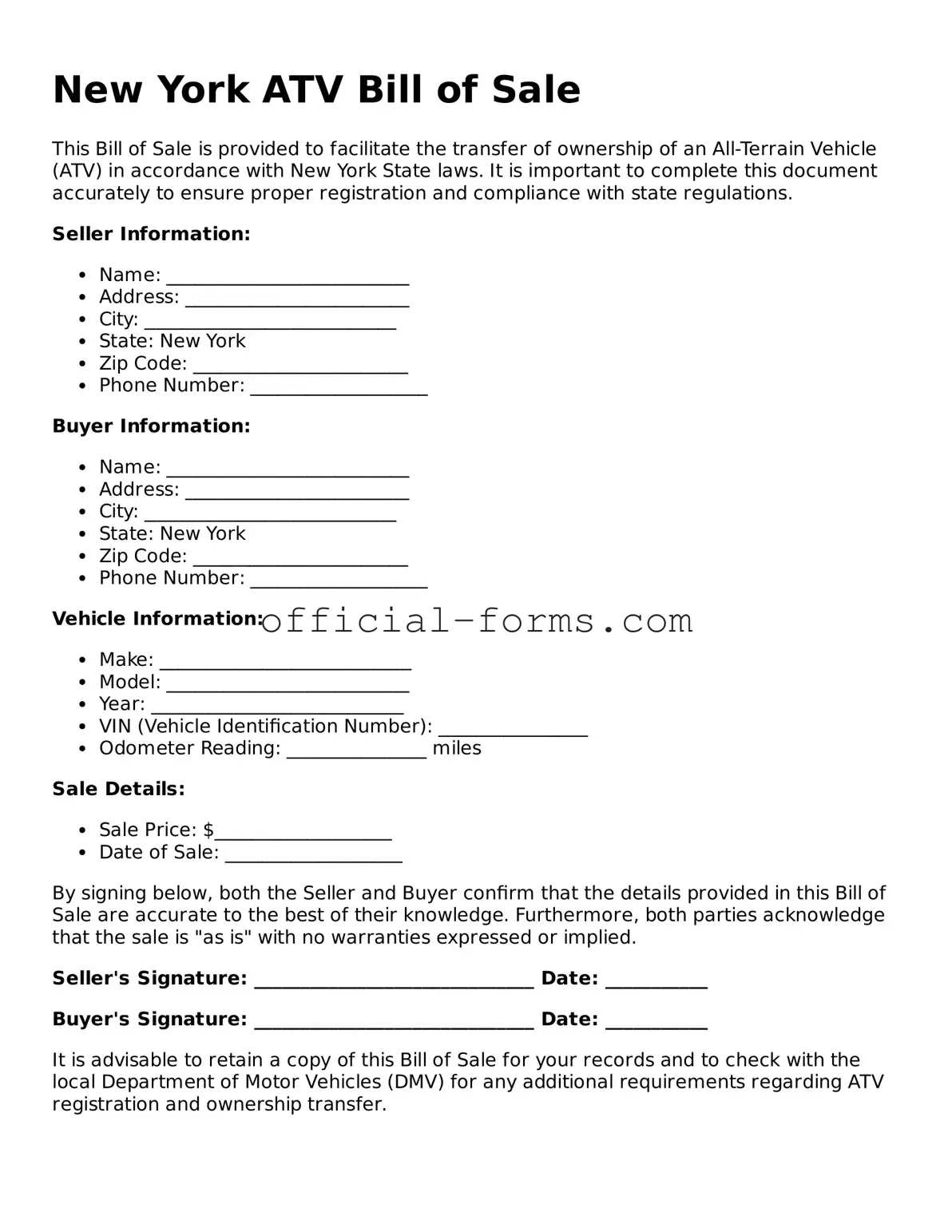Filling out the New York ATV Bill of Sale form can seem straightforward, but many individuals make common mistakes that could lead to complications later. One frequent error is failing to provide complete information about the vehicle. It’s essential to include all relevant details, such as the make, model, year, and Vehicle Identification Number (VIN). Incomplete information can create confusion and may complicate the registration process.
Another mistake involves not accurately recording the sale price. The sale price should reflect the actual amount paid for the ATV. If the price is understated or overstated, it could lead to issues with tax assessments or future transactions. It’s important to be honest and precise in this section to avoid any legal repercussions.
Many individuals also overlook the importance of signatures. Both the seller and the buyer must sign the form to validate the transaction. Without these signatures, the document may not be legally binding, leaving both parties vulnerable to disputes regarding ownership.
In addition, some people forget to date the Bill of Sale. A date is crucial as it establishes the timeline of the transaction. Without it, there may be confusion about when the sale occurred, which could affect liability and ownership claims in the future.
Another common error is neglecting to include any terms or conditions of the sale. If there were agreements regarding warranties or the condition of the ATV, these should be clearly stated. Omitting this information can lead to misunderstandings and disputes later on.
Sometimes, individuals fail to provide their contact information. Including a phone number or email address is vital for future communication regarding the sale. If issues arise, having a way to reach each other can help resolve them quickly and amicably.
It’s also important to ensure that the form is filled out in legible handwriting. Illegible writing can lead to misinterpretations of the information provided. Taking the time to write clearly can prevent confusion and ensure that all parties understand the details of the transaction.
Moreover, individuals may forget to keep a copy of the completed Bill of Sale for their records. Retaining a copy is essential for both the buyer and seller. This document serves as proof of the transaction and can be invaluable if any disputes arise in the future.
Lastly, many people fail to check for any local regulations or requirements that may apply to ATV sales in their area. Each locality may have specific rules that need to be followed. Being aware of these can help ensure that the sale is compliant and protect both parties involved.
